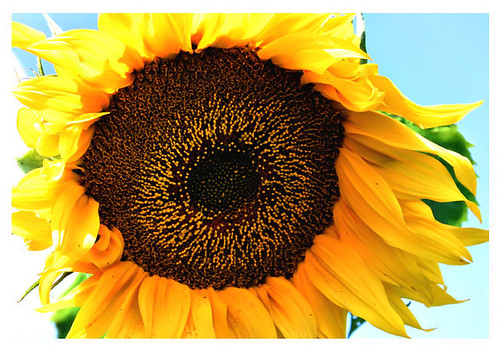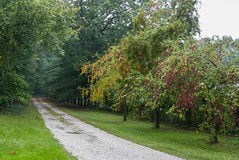Raggedy Ann
Catherine Jamieson

What's a sunflower? A sunflower is any plant of the genus Helianthus of the family Asteraceae (aster family), annual or perennial herbs native to the New World and common throughout the United States. In cultivation, the flower heads, commonly having yellow rays, sometimes reach 1 ft (30 cm) in diameter.
The common sunflower (H. annuus) is an annual, native from Minnesota to Texas and California and perhaps also in Central and South America. Native Americans cultivated the plant and found many uses for it: the nutritious seeds were eaten raw, made into a meal, or used as a source of hair oil; a yellow dye was obtained from the flower heads, and a fiber from the stalks; the roots of certain other species were eaten.
Today the common sunflower is widely cultivated; it is particularly valued in the countries of the former Soviet Union, where the seeds are made into bread. The seeds are almost universally used as a poultry food and principally as the source of an oil utilized for such purposes as cooking and soapmaking; the oil cake is fed to stock. The common sunflower is the state flower of Kansas, and a sunflower is regarded as the floral emblem of Peru, where it was revered by the ancient sun worshipers.
Several other species are in cultivation—some are garden flowers; the Jerusalem artichoke is a food plant. Other plants are sometimes called sunflower. Sunflowers are classified in the division Magnoliophyta, class Magnoliopsida, order Asterales, family Asteraceae.
Flowers have an expression of countenance as much as men and animals. Some seem to smile; some have a sad expression; some are pensive and diffident; others again are plain, honest and upright, like the broad-faced sunflower and the hollyhock.
Henry Ward Beecher
View Project:




